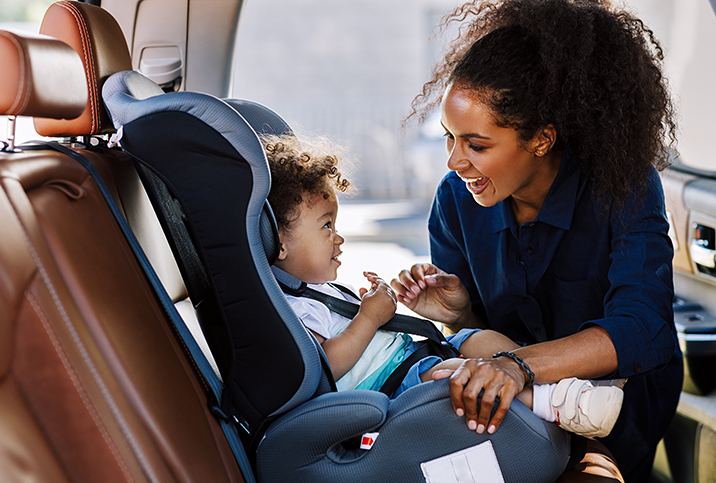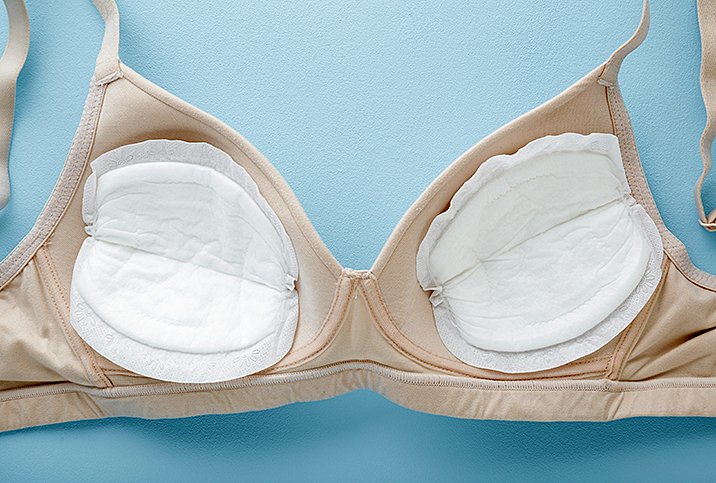Seeking Help From a Car Seat Technician Can Ensure Your Baby's Safety

According to the U.S. Department of Transportation (DOT), motor vehicle injuries are a leading cause of death among children in the United States. Knowing how to properly strap your child into a car seat can be literally lifesaving. In fact, DOT reported that child safety seat use reduced the risk of death for infants under 1 year old by 71 percent.
Car seat regulations were first implemented in the United States in 1971. Since then, both the safety of car seats and the regulations that accompany them have grown in complexity.
According to James Fitzpatrick, senior compliance engineer and child car seat technical consultant, technology is constantly evolving, and this holds true in the car seat industry. "We are seeing the addition of more and more advanced safety features in car seats," he said in an interview with Giddy. "Ease of use is the biggest consideration."
Cass Herring began her work in child passenger safety in 2012 as an injury prevention coordinator at the Choctaw Nation of Oklahoma and is now the program manager for the nonprofit Safe Kids Worldwide. She mirrored Fitzpatrick's sentiments, saying car seat manufacturers have provided many safety features on seats intended to make seats safer and easier to use, adding that car seat manufacturers are looking to accommodate a wider range of children and families.
The latest research from the National Highway Traffic Safety Administration shows that 59 percent of car seats are installed incorrectly. Fitzpatrick has nine years of experience in the industry. According to him, the number seems a bit low.
"There are still many kids riding in car seats either not properly restrained or not at all. Some of the misuse we see requires only minor adjustments, but some are serious and potentially dangerous," Fitzpatrick explained. "It is very important that parents and caregivers read their manuals (both car seat and vehicle), check the labels on the seat and ensure they are following the correct steps each and every time."
While Herring thought that percentage seemed accurate, she recognizes the numerous things that can go wrong when installing a car seat.
"There are many factors that should be considered when installing a seat, including is it the right seat for the child, correct direction, does it fit the child (height, weight and development level), is it installed correctly and is the harness used appropriately?" Herring said.
How can I ensure the car seat is installed correctly?
Considering the high number of car seats installed incorrectly, getting your car seat installed by a professional technician is a good idea. Many places even offer free inspections. (Spots can fill up fast, so make sure to sign up well before your delivery date.)
To help educate new parents about how to use a car seat properly for their child, Safe Kids Worldwide put together an ultimate car seat guide. The guide can be a good starting place for parents looking to buy a car seat for their newborn.
Before the baby is born, Fitzpatrick advises that new parents make sure the seat they are buying fits their budget, and they are comfortable and able to use it correctly each and every time. "Don't be scared of car seats! Follow the instructions, and if you are uncertain, reach out to the manufacturer or a certified car seat technician," Fitzpatrick said.
'Make sure the harness is adjusted at or just below the shoulders of your child for rear-facing and at or just above for forward-facing.'
Features such as harness height and tightness are key in making sure your child will be safe, and that the car seat is fitting correctly.
"Make sure the harness is adjusted at or just below the shoulders of your child for rear-facing and at or just above for forward-facing," Fitzpatrick said. "Again, always check your manual for any specific requirements for your seat."
Before the baby is born, it's important for parents to already have their car seat installed properly. The hospital might want to approve the car seat you have and check it is installed properly before you leave.
"New parents can be overwhelmed by all of the safety messages and information that they are receiving," Herring said. "It is understandable that parents might wait to explore information about car seats until closer to the child's due date. This could cause parents to rush to install the car seat."
How do I know what car seat to buy?
According to Herring, parents should look for a car seat that fits their needs. This includes making sure the car seat fits the child and the parent's vehicle, and that it can be used correctly each time.
"Some families may choose to purchase a rear-facing-only car seat and purchase multiple bases to make transitioning the car seat between vehicles easier…. Many families want a travel system and the infant car seats are compatible with the strollers in those systems," Herring said.
"Infant car seats and convertible/all-in-one car seats are great choices for caregivers, as long as the seat and harness fit the child and vehicle well," she continued.
Herring pointed out all car seats have height and weight limits, but beyond that, parents should consider the harness height and features on a seat such as how many crotch buckle positions the seat has and how the seat works to adjust the harness straps on the seat.
Besides making sure the car seat fits the child, making sure the car seat fits in the vehicle is just as important. "Car seats have different designs and footprints and may not be compatible with every vehicle or fit with other car seats or occupants that currently ride in the vehicle," Herring explained. "When shopping for a car seat, all occupants that ride in the vehicle should be considered.
"Spacing in a vehicle can also be an issue," she continued. "If the space in the vehicle back seat is limited, parents may have difficulty achieving the recommended installation angle or the vehicle seat in front may interfere with the installation. If the seat is too short for the recommended amount of a car seat's footprint to sit according to manufacturer's instructions, then you will need to look for a seat that is compatible with the vehicle."
Practice, practice, practice
According to medical advice from the American Academy of Family Physicians, it is a good idea to set up and practice using your car seat in advance. Although some parents might want to hold their baby in the car on the way back home from the hospital, that is not safe—or legal. Using a car seat for newborns is required by law.
Considering the wide range of car seats available, parents are advised to read their car seat's manual before using it and thoroughly understand how the seat functions.
"There are a range of seats and no two are the same," Herring said. "We all have the challenge of learning to use something new correctly, but it is important for parents to feel confident in how their seats operate.
"If there is a lot of frustration or confusion with certain aspects of the car seat, it may be beneficial to look for a system that the caregivers feel more confident in using," Herring continued. "Reading the car seat owner's manual and referring to the manufacturer for resources are a great start. Caregivers can also find a certified Child Passenger Safety Technician to help them navigate how their car seat operates."
Lean on your support system
It can be confusing for new parents to figure out the complexities of a car seat. What to buy, how to install it and ensuring you are meeting all state and federal regulations can be overwhelming—so ask around to your other parenting friends and family.
Rachael Lynn-Drake, a mother of a 4-year-old from Ontario, Canada, said she got most of her information about car seats from friends and other parents. Although she didn't hire a car seat technician, with help from family and friends, she was able to figure out the needed car seat safety for her child.
Lynn-Drake's tips for new parents are to make sure the straps are the correct tightness and the chest piece is in the right place.
"I found out coats in car seats aren't good—the straps don't secure the child," Lynn-Drake shared. "So, I was suggested to use a car seat poncho for colder months."
'Child passenger safety technicians and instructors are in many communities and more than happy to help guide parents and caregivers with car seat questions.'
According to Herring, common car seat mistakes new parents might make include the seat belt or lower anchors not secured correctly and the harness used incorrectly (too high, too low, twisted, too loose).
Asking questions to other parents, experienced car technicians and medical professionals is the best way for parents to get the information they need to make the safest choice for their child.
"Child passenger safety technicians and instructors are in many communities and more than happy to help guide parents and caregivers with car seat questions," Herring said. "You can find a technician here. There are also many technicians that offer virtual car seat appointments."
Besides the numerous other demands that come with parenting, choosing the safest and best car seat for your newborn may seem like a daunting task. With so much information and safety concerns to consider, Fitzpatrick advises parents to slow down and give themselves time to make an informed decision.
"Misuse data is high, but give yourself a break, parents. You have a lot going on," Fitzpatrick concluded. "Take the time to really understand the seat you have chosen for your child. Purchase the seat from a place that offers a selection of different car seats and try them. Be sure to ask questions."

















